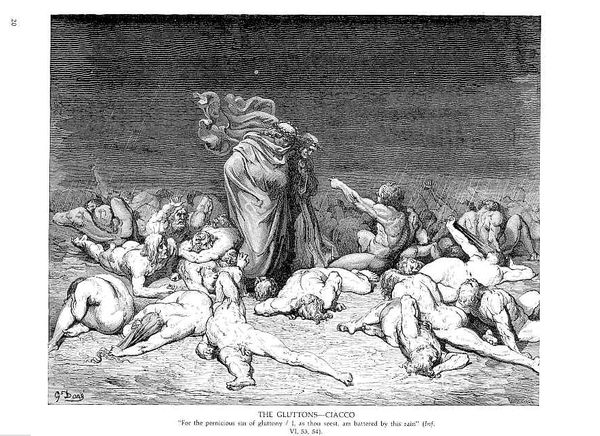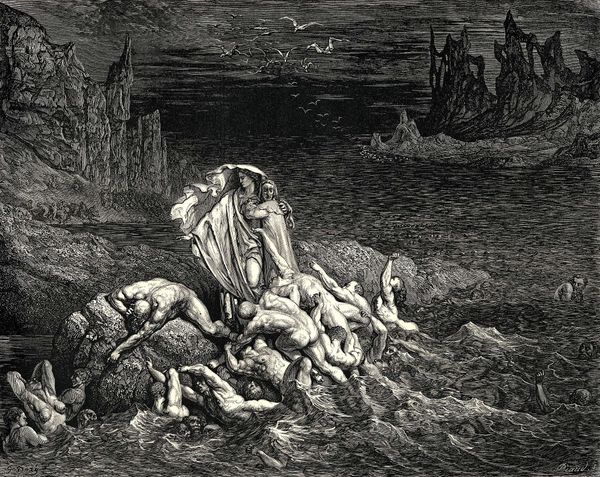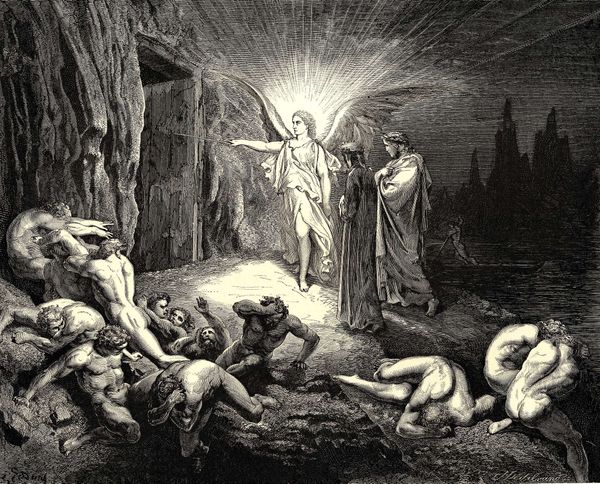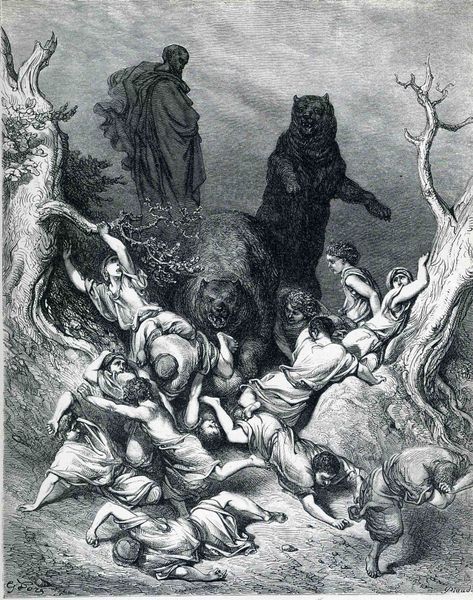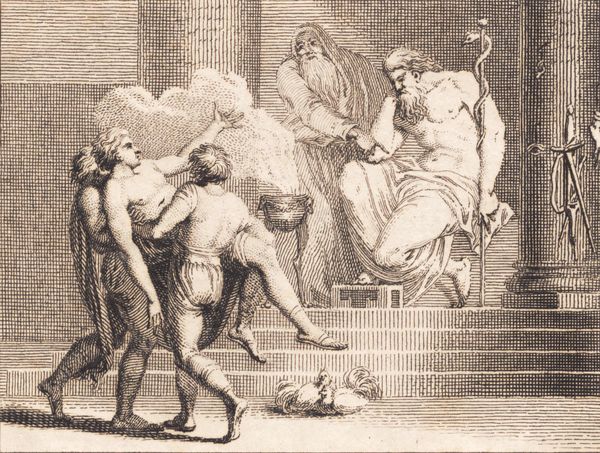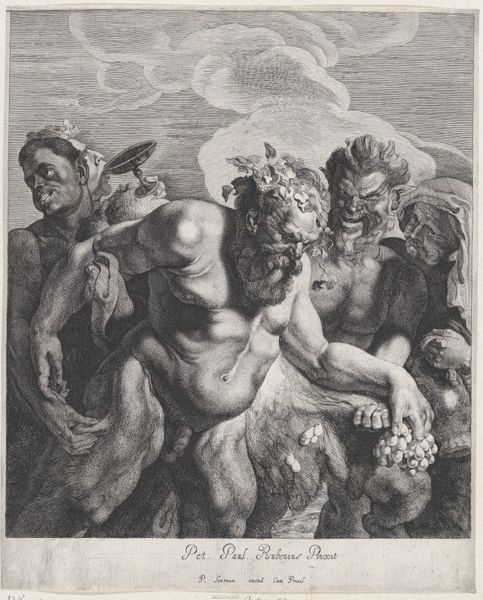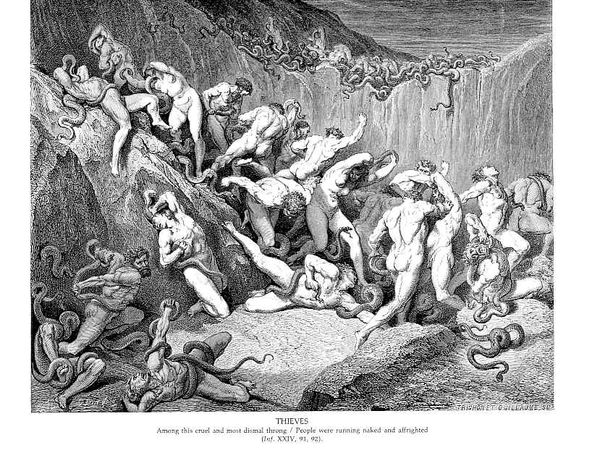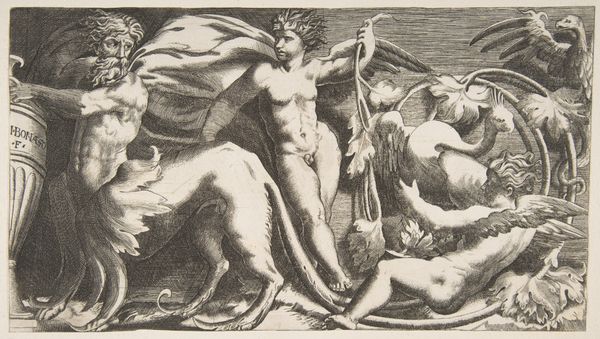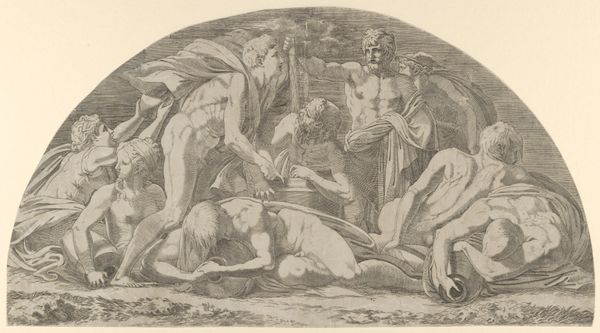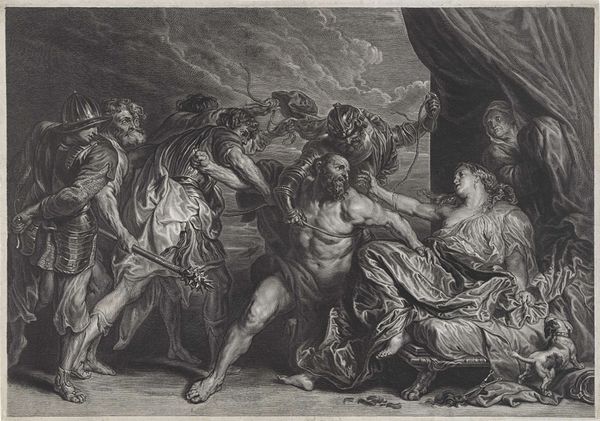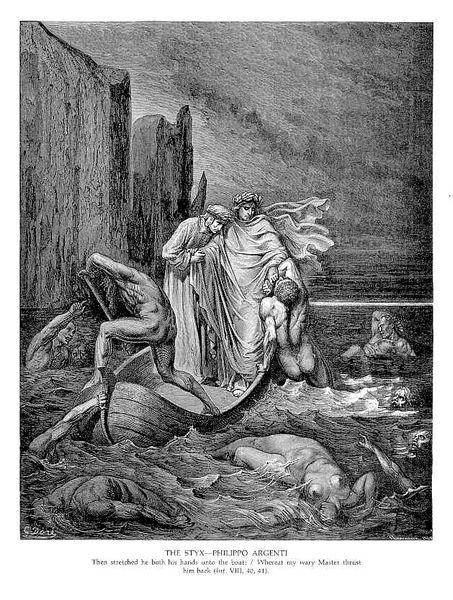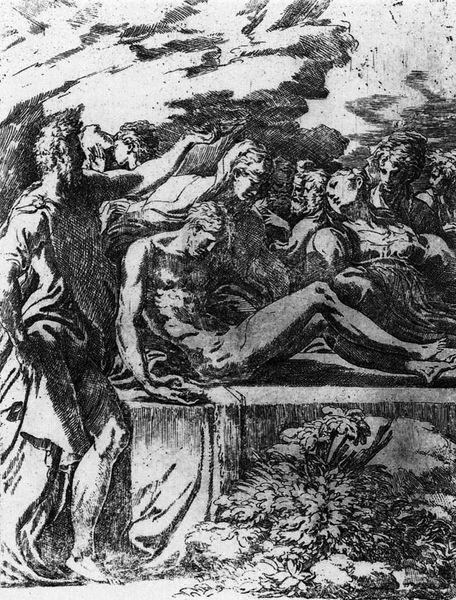
drawing, ink, engraving
#
drawing
#
allegory
#
narrative-art
#
charcoal drawing
#
figuration
#
ink
#
romanticism
#
mythology
#
human
#
haunting
#
history-painting
#
charcoal
#
engraving
Copyright: Public domain
Editor: Gustave Doré's "The Inferno, Canto 6," seems like it's rendered in ink or engraving, with very high contrast. It feels incredibly bleak and dramatic, almost operatic in its scale. What are your thoughts as a historian on the public reception and politics surrounding a piece like this, depicting such a graphic scene? Curator: This image encapsulates Doré’s role as a visual interpreter of complex texts for a wide audience. Consider the context: 19th-century society, mass printing, a public newly literate and hungry for imagery. Doré isn’t just illustrating Dante; he’s creating a shared cultural understanding of sin and divine retribution. The political power lies in visualizing abstract concepts of morality for the masses. Does the realism shock you? Editor: It does. The bodies strewn across the ground and the despair etched on their faces are quite arresting. Is this romanticism turned grotesque? Curator: Precisely! Romanticism often engaged with the sublime – the awe-inspiring, even terrifying aspects of human existence. Doré uses that visual language to reinforce the consequences of sin within a moral framework expected in the rising industrial societies of Europe. Look at how he stages the figures, almost like a history painting, to lend legitimacy to Dante's allegory. What could a contemporary audience, perhaps unfamiliar with the nuances of Dante, take away from such an image? Editor: Perhaps a warning? The image almost preaches damnation through its stark portrayal of suffering. It makes me think about how religion and art served similar purposes back then, using visual narratives to shape societal norms. Curator: Exactly. Doré made the religious more accessible. Considering this work in today’s art world helps to show how certain values became normalized and dominant and how some stories stay with us through compelling images. Editor: I see, that’s a completely different way of looking at this artwork; Doré as an image-maker who spoke to, and shaped, an entire society. Curator: And in doing so, raised crucial questions about whose vision of hell gains prominence. Fascinating, isn't it?
Comments
No comments
Be the first to comment and join the conversation on the ultimate creative platform.

